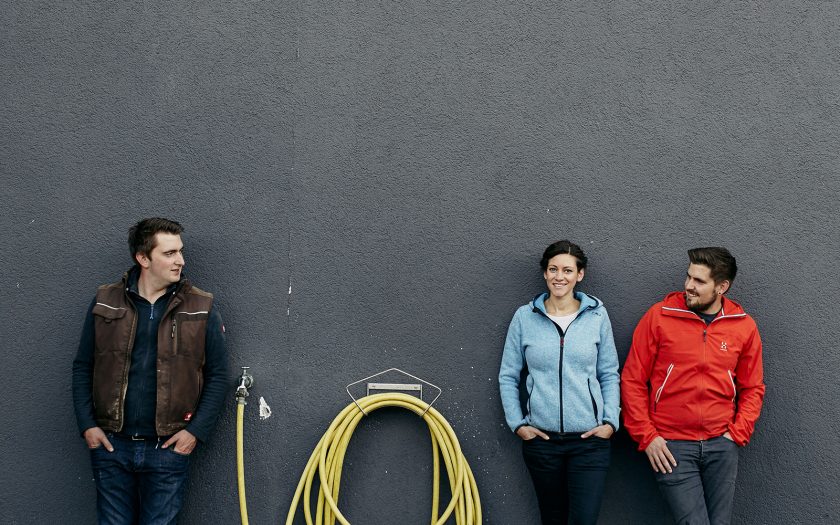Knewitz
We’re thrilled to introduce, Weingut Knewitz, our newest grower in Germany. Located in Appenheim, a small town in the northern section of Rheinhessen, the largest of the German growing regions. Rheinhessen is something of an oddity; while it is home to some of the most expensive and sought-after wines in all of Germany (Keller) and historically some of the most important sites (the Roter Hang in Nierstein – Rotliegend slate), quite a lot of bulk wine is still produced here. A large percentage of the Rheinhessen wine is grown on rolling hills with rich soil and destined from the bulk market, cheapening the reputation of this very interesting region.
This northern section of Rheinhessen, tucked away in a series of small valleys, has a unique soil structure and is home to most limestone-rich vineyards in Germany. The Village of Appenheim sits at the foot of the Westerberg, a former coral reef that separates the Selz (Selztal – where Braunewell is located) and the Welzbach valleys. 40 million years ago, the Mainz Basin, which extends into this section of wine country was part of the Paratethys Sea, formed during the late Jurassic period. This enormous body of water was the predecessor of the Black and Caspian seas. The Mainz Basin was home to a series of reefs and the geology of these former coral reefs is the foundation of the exceptional wines from the Knewitz family.
The Knewitz family has been making wine in Appenheim since the 19th century, but it was Erwin and Magdalena Knewitz who built the estate and their son Gerold who started estate bottling wines for the first time in 1976. Over time, this small estate grew from just 5 hectares to 15 by the middle of the 2000s. Gerold’s son Tobias trained as a winemaker at Geisenheim and took over the Domaine in 2007. Tobias’ wife Corina and brother Björn joined him shortly after. Today, they farm 25 hectares spread over three main villages: Appenheim, Gau-Algesheim, and Nider-Hilbersheim. Their tireless work, concentrating on producing wines of the highest possible quality led to an invitation to join the VDP in 2022.
The names may be a mouthful, but the wines are incredibly precise, reflecting the direct and transperent nature of vinifera grown on limestone. Tobias, Corina, and Björn farm six different single vineyard sites: Goldberg (Gau-Algesheim), Hundertgulden (Appenheim), Honigberg (Nieder-Hilbersheim), Steinacker (Nieder-Hilbersheim), Eselspfad (Appenheim) and Laurenziberg (Gau-Algesheim. While the sites share a similar bedrock of limestone, each vineyard has different subsoils, topsoil, exposures, and characters in the finished wine.
Knewitz’s most treasured vineyard is Hundertgulden, first mentioned in the 12th century when it was given as a gift to the Didibodenberg Monastery. It was named in the 14th century after being sold for “a healthy sum of Rhenish Gulden coins”. This site is one of the best in Rheinhessen and is classified as the most limestone-rich in all of Germany. Gau-Algesheimer Goldberg is situated directly next to Hundertgulden but belongs to the neighboring village. This is the warmest of the six single vineyard sites and has an extremely high limestone content as well. Steinacker is the coolest, most sheltered of the single vineyards, with a very stony soil comprised of both limestone and iron-rich soils. Eselspfad produces the most textured wines at the estate, with deep loess topsoil over limestone. Honigberg is to the southeast of Hundertgulden, showing depth and power from clay, red limestone, and iron rich soils. St. Laurenzikapelle is a 200-meter-high hillside, named after a church, first mentioned in the 7th century. The soils here are clay-marl with loess and loam over limestone. It’s a cooler site, due to its elevation.
Knewitz produces Regional, Estate quality wines, from Silvaner, Chardonnay, Pinot Noir, Pinot Blanc, and the most important grape variety here, Riesling. Village wines (Ortswein) are produced from each village and a series of excellent single vineyard Lagenwein from the aforementioned single vineyards.




